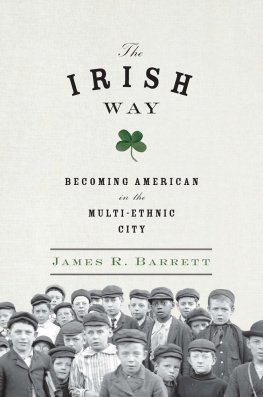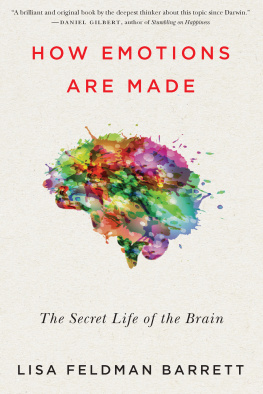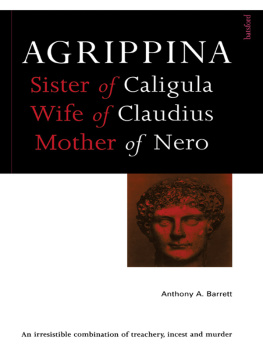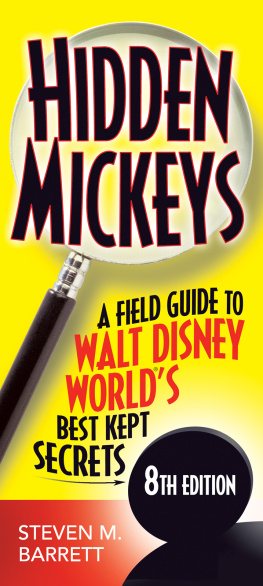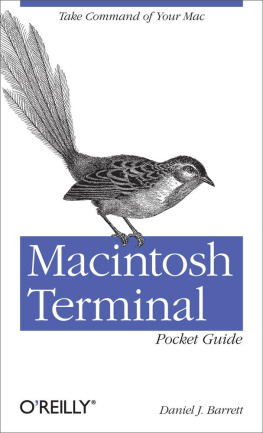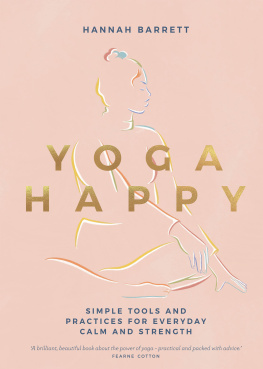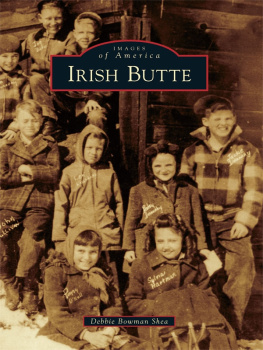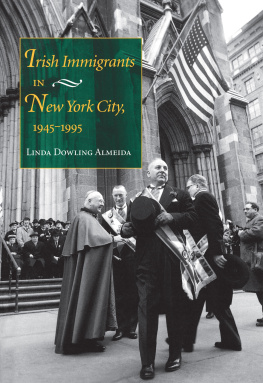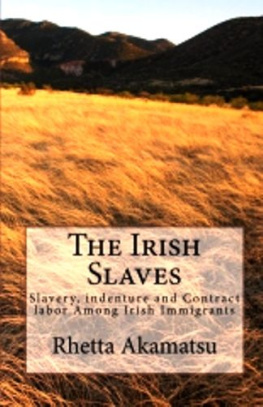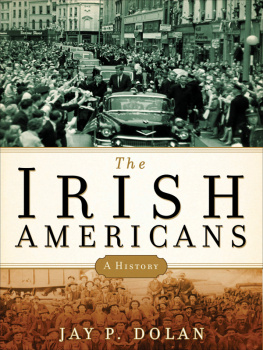
THE
IRISH
WAY
ALSO BY JAMES R. BARRETT
Work and Community in the Jungle:
Chicagos Packinghouse Workers, 18941922
William Z. Foster and the Tragedy of American Radicalism
THE
IRISH
WAY
BECOMING AMERICAN
IN THE MULTIETHNIC CITY
JAMES R. BARRETT
THE PENGUIN PRESS
New York | 2012
THE PENGUIN PRESS
Published by the Penguin Group
Penguin Group (USA) Inc., 375 Hudson Street,
New York, New York 10014, U.S.A. Penguin Group (Canada), 90 Eglinton Avenue East, Suite 700,
Toronto, Ontario, Canada M4P 2Y3 (a division of Pearson Penguin Canada Inc.) Penguin Books Ltd,
80 Strand, London WC2R 0RL, England Penguin Ireland, 25 St. Stephens Green, Dublin 2,
Ireland (a division of Penguin Books Ltd) Penguin Books Australia Ltd, 250 Camberwell Road,
Camberwell, Victoria 3124, Australia (a division of Pearson Australia Group Pty Ltd)
Penguin Books India Pvt Ltd, 11 Community Centre, Panchsheel Park, New Delhi 110 017,
India Penguin Group (NZ), 67 Apollo Drive, Rosedale, Auckland 0632, New Zealand
(a division of Pearson New Zealand Ltd) Penguin Books (South Africa) (Pty)
Ltd, 24 Sturdee Avenue, Rosebank, Johannesburg 2196, South Africa
Penguin Books Ltd, Registered Offices: 80 Strand, London WC2R 0RL, England
First published in 2012 by The Penguin Press, a member of Penguin Group (USA) Inc.
Copyright James R. Barrett, 2012
All rights reserved
Photograph credits appear on .
LIBRARY OF CONGRESS CATALOGING-IN-PUBLICATION DATA
Barrett, James R.,.
The Irish way : becoming American in the multiethnic city / James R. Barrett.
p. cm.
Includes bibliographical references and index.
ISBN: 978-1-101-56059-4
1. IrishUnited StatesHistory19th century. 2. IrishUnited StatesHistory20th century.
3. National characteristics, Irish. 4. City and town lifeUnited StatesHistory19th century.
5. City and town lifeUnited StatesHistory20th century. 6. Cultural pluralismUnited States.
7. IrelandEmigration and immigration. 8. United StatesEmigration and immigration. I. Title.
E184.I6B273 2012
305.89162073dc23 2011040105
Printed in the United States of America
1 3 5 7 9 10 8 6 4 2
DESIGNED BY NICOLE LAROCHE
No part of this book may be reproduced, scanned, or distributed in any printed or
electronic form without permission. Please do not participate in or encourage piracy of
copyrighted materials in violation of the authors rights. Purchase only authorized editions.
ALWAYS LEARNING
PEARSON
FOR JENNY BARRETT
and
CATHERINE MARIE ELLIS BARRETT
(19132005)
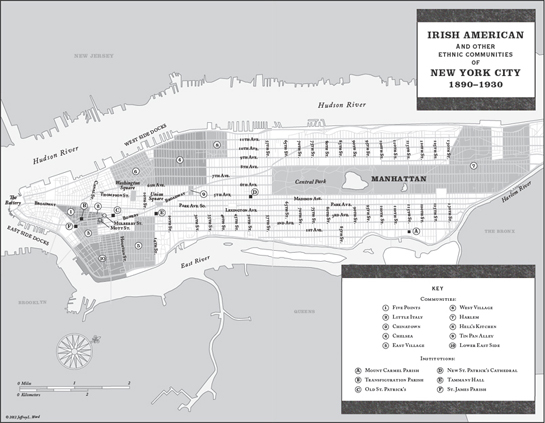
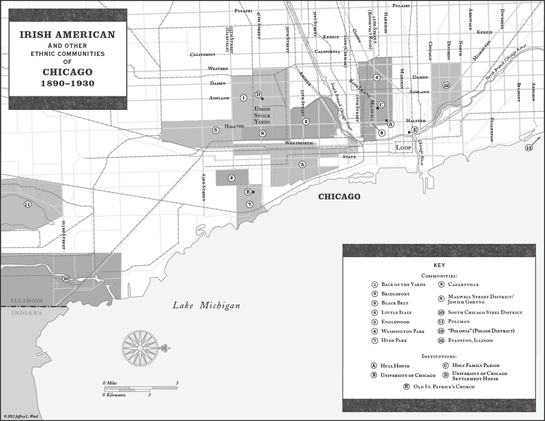
INTRODUCTION
T hough surrounded by Poles and Italians, the Jewish writer Harry Golden recalled of his Lower East Side neighborhood, it was the Irish and the Irish alone we Jews admired we identified the Irishman not only with the English language but also with the image of what an American looked like. The Irish were the cops and the firemen and the ballplayers. Although the immigrant Jew and the Irish poor did not get along well, these Irish were still the figures Jewish immigrants wanted to emulate.
Immigrants who arrived in American cities around the turn of the century found it difficult to avoid the Irish. Between 1840 and 1890, more than three million Irish immigrants had entered the United States, and by 1900, an estimated five million of their first and second generations were settled in. There were more Irish in Brooklyn and Manhattan than in Dublin, and more in the United States than in the nation of Ireland. But then the sources of immigration shifted, and between 1890 and 1920, eighteen million new immigrants, largely from eastern and southeastern Europe, came to the United States. When they arrived in the American city, they found the Irish.
Whether they wanted to save their souls, get a drink, find a job, or walk around the corner, the newcomers often had to deal with entrenched Irish Americans. They might get a job through an Italian padrone, but the In these spheres and many others, the Irish played a significant role in the newcomers Americanization; as a result, the multiethnic American city of the early twentieth century assumed a peculiarly Hibernian cast.
Even in cities with large ethnic enclaves and vast arrays of voluntary organizations, newer immigrants navigated a world dominated by the Irish. Between the 1890s and the 1930s, when Ireland was emerging as a modern nation and the United States became a major economic and political power, they seemed to be everywhere.
This book is a study of Irish Catholic Americans, particularly of the second and third generationsthose who were shaped not in the Irish countryside but in the streets of Americas largest citiesand of later Irish immigrants who arrived between the 1880s and 1920s. It is also an interethnic history, tracking their relations with other ethnic and racial groups with whom they shared neighborhoods, workplaces, churches, and other urban institutions. Identity in the United States, as we will see, emerged from dynamic relationships among ethnic groups, as well as from particular groups own distinct history and traditions, and it can be understood only in the context of these interactions.
Here we view the Irish American community from the bottom up, focusing our attention on common peopleparish priests, street gangsters, ward heelers, and union activists. Certainly the elite was important in the development of the Irish American community, but we can best view the engagement of the Irish with other peoples, and appreciate their impact on the new multiethnic urban culture, at street level.
Individual ethnic cultures were enduring and influential. The newer ethnic groups were not assimilated in the sense that they were completely absorbed into some sort of cultural mainstream: in the effort to settle in, their own cultures offered them their most important resources. But a gradual acculturation, by which newer immigrants acquired knowledge and skills that allowed them to deal with their new city worlds, was central to their experience. This Americanization was partly a coercive process that occurred in settlement houses, night school classes, and corporate programs, where middle-class elites pressed WASP values on working-class immigrants. But most immigrants came to understand their new world less through such formal programs than through informal contacts with the Irish and other experienced working-class Americans of diverse ethnic backgrounds in streets, churches, and theaters. Understanding that is a key to understanding the multiethnic American city.
AMERICAS FIRST ETHNIC GROUP
The Irish were Americas first ethnic group, and their deepest roots lay in rural Ireland. They saw themselves as a diasporic peopleexiled from their homes by cruel fate and brutish English colonizers. The Great Famine of 184552 haunted their communities for decadesit cost Ireland more than half of its population through disease, starvation, and migration. The human dimensions of this searing catastrophe account for the grim determination with which the Irish went about carving out a place in American society. By the time they reached American shores, the Irish had experienced not only the systematic destruction of much of their traditional culture, but also a devastating natural disaster and the willful British neglect of their suffering that expressed itself in thousands of individual tragedies. The Famine cast its shadow over millions of Irish Americans as a
Next page
